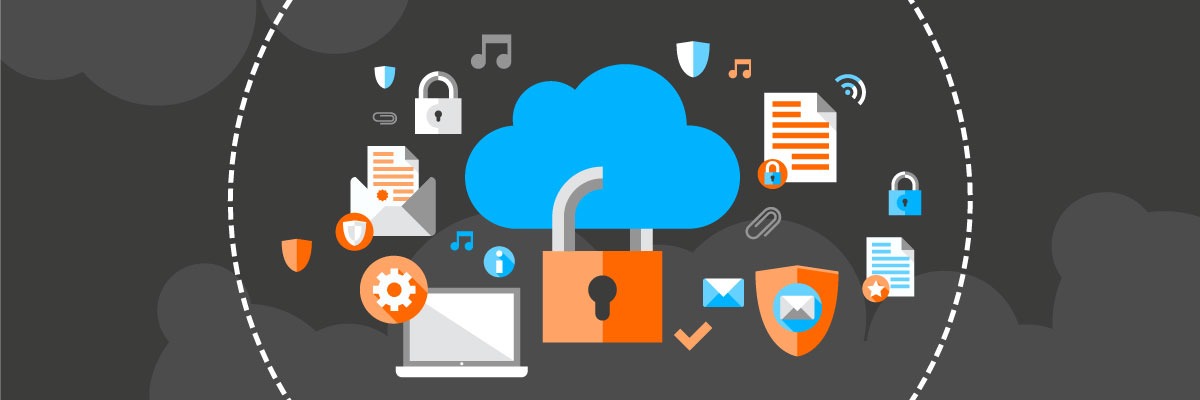Zero-Trust Security Model for Confident and Secure Businesses

The zero-trust security model matters for small and medium businesses (SMBs) alarmed by the challenge of how to protect their company and customers’ data. Trust is important in business—between service providers, investors, partners, employees, and customers.
If you’re unfamiliar with “zero trust,” you could be forgiven for a lack of trust. But, many of the largest companies in the world have adopted the zero-trust (ZT) security model to establish an assured approach to securing their company and customers’ data.
In this blog post, we explain what the zero-trust security model is and why it matters. We outline its core principles, and provide some simple steps for how your SMB can adopt the zero-trust security model to confidently reinforce your security posture.
What Is the Zero-Trust Security Model?
The traditional view of cybersecurity treats access like the primary safeguards on a medieval, European castle. Everything inside your network security measures and corporate firewall was completely safe—like villagers behind a moat, high walls, and a heavy, iron drawbridge. Once inside, everyone roamed free without challenge and had access to everything.
The ZT outlook from our secure fortifications is a little different, and with good reason:
- Malicious actors continue to find new ways to hack through our security measures, pillage the unprepared, and carry off their spoils.
- Meanwhile, the borders between home and work (inside and outside the fortifications) have become fuzzy. Employees, partners, and customers increasingly require remote and freelance access to our systems, across locations, networks, and WiFi connections with unknown security measures.
Zero trust is a framework for keeping your online activities and data safe. It requires strict identity verification for every user or device that attempts to access your network’s perimeter and—crucially—at every point within it. There is no implied trust based on network location, IP address, or even employment status.
Why Does the Zero-Trust Security Model Matter?
 The rise of remote work, accelerated due to government mandates that restricted individuals’ movement throughout the COVID-19 pandemic of 2020-2022, has increased security risks. SMBs require a different approach to security practices. The traditional “castle-and-moat” model of trusting devices and users within your corporate perimeter has become increasingly inadequate.
The rise of remote work, accelerated due to government mandates that restricted individuals’ movement throughout the COVID-19 pandemic of 2020-2022, has increased security risks. SMBs require a different approach to security practices. The traditional “castle-and-moat” model of trusting devices and users within your corporate perimeter has become increasingly inadequate.
Instead, the ZT approach is designed to create “perimeterless security” that:
- Verifies the identity and integrity of devices and users without regard to location
- Provides minimal access to applications and services based on authenticated users and devices
Zero-Trust Principles
Zero trust is summed up in the phrase: never trust, always verify. There are three core principles for modern networks:
- Verify explicitly
- Use least-privilege access
- Assume breach
What do they mean?
Verify Explicitly
Users or devices should not be trusted by default under the ZT model—even if they were previously verified or are currently connected to a permissioned network.
To verify explicitly means that:
- User access should only be granted to explicitly authorized data that is necessary for them to complete a set task
- You must always require continuous verification at every stage to check on who is accessing and using your company data—while denying access to everyone else
Verification may be required on:
- Computer networks and systems
- Cloud services and infrastructure
- User and email accounts
- Databases
- Devices like laptops, tablets, and smartphones
- Platforms and software packages
- Web services and applications
Examples include:
- Insisting on strong user identity and device verification prior to granting access
- Assigning relevant identity types, verification methods, access roles or levels, and customs permissions
 The custom nature of this access also helps comply with various country and state legislation around data security, and similar industry standards and benchmarks.
The custom nature of this access also helps comply with various country and state legislation around data security, and similar industry standards and benchmarks.
Use Least-Privilege Access
Adopting a ZT stance requires that you grant the least number of privileges needed to anyone who accesses or uses data by using access controls.
To use least-privilege access means that you:
- Give users access only to the resources they need to perform their job
- Explicitly prevent users from accessing anything else
This is sometimes called the principle of least privilege (POLP) or the least-privilege access model.
Examples include:
- External users, such as clients or suppliers, who log on to your website application, portal, or platform to gain access to their account
- An HR partner who requires access to some employee records on appraisals and performance, but not to information about salaries and pensions
Assume Breach
ZT puts you on guard.
If you assume a breach, this means that:
- You should configure constant monitoring of all activity across your network, systems, platforms, devices, and website applications
- You should establish a system for acting on these alerts and reports—not only after something has gone wrong or when you need to demonstrate compliance
 Examples include:
Examples include:
- Using activity logs and other software to record every single system and user action on networks, software, and devices
- Configuring logs to send SMS or email alerts to system administrators following unusual behavior such as repeated or failed login attempts, file uploads, or a higher payload than usual on your network
Executive Order on Improving the Nation’s Cybersecurity
The White House’s Executive Order on Improving the Nation’s Cybersecurity, mentions zero-trust architecture (ZTA) as one of the “security best practices” in the context of cloud technology. (Standards and guidance to achieve this plan have been outlined by the National Institute of Standards and Technology.)
Section 10:(k) of the order refers to how ZTA achieves this by:
- Eliminating implicit trust (“in any one element, node, or service”)
- Requiring continuous verification (“of the operational picture via real-time information from multiple sources to determine access and other system responses”)
- Allowing users full but bare-minimum access (only what “they need to perform their jobs”)
- Assuming a breach is inevitable (“or has likely already occurred”)
- Constantly looking “for anonymous or malicious activity”
Let’s look at three SMB case studies.
Case Study 1—Zero Trust Access in an Ambitious Financial Consultancy
Imagine you are a successful financial consultancy with 150 staff offering a range of financial planning services, portfolio management, pension consulting, and private fund managers. Your team uses multiple software platforms and your experts often work remotely.
What zero-trust strategies can I use so that all platforms and customer data is secure and protected from malicious hackers, regardless of who is connecting or from where—and without password fatigue?
In this example, we will use the verify explicitly ZT principle.
One answer for your consultancy is to invest in identity and access management (IAM) solutions. Only login requests from recognized and specific sources will be authenticated. IAM solutions include:
- Single sign-on (SSO)—This authentication method enables users to securely log in to multiple software systems using a single ID. You can configure other systems to “trust” the same user based on the original ID.
- Multi-factor authentication (MFA)—This authentication method grants users access to website applications or networks only after providing two or more proofs of ID. Users can use an authenticator application on their smartphone, a short-message service (SMS) like a text, or email—to gain access to their user accounts on your finance portal.
- Password manager—This is a software tool that helps users prevent hacked passwords or passphrases, store and manage them securely, across multiple website applications. Features include automatic logins, changing passwords regularly (When’s the Last Time You Changed Your Passwords?), and tracking whether the login credentials have been detected on the dark web. They also help to reduce password frustration.
Case Study 2—Zero-Trust Policy Across Critical Applications in a Medical Services Clinic
In this scenario, your SMB provides private-sector medical services. Records contain lots of sensitive information about patients.
How can those in charge of the IT systems and databases ensure that only the right people have access to the patient information that’s appropriate for their task?
The need to comply with data-protection laws such as the CCPA (California Consumer Privacy Act) or the EU’s GDPR goes without saying. But is there anything more specific to guide your policy decisions?
In this example, we will use the least-privilege access ZT principle.
This answer lies in written access policies such as:
- Just in time (JIT) says any personal data must only be accessible to users at the point of need (not before or after). A doctor should not be able to access the medical details of a patient before that patient has consented or come under their care.
- Just enough access (JEA) states that personal data must only be accessible by users with the appropriate level of authorization. A finance administrator should be able to gain access to just enough of patients’ medical reports and bank details in order to process a patient’s bill.
Case Study 3—Zero-Trust Solutions for a Specialist Law Firm
If you run a law firm, you’ll have amassed a substantial amount of documentation, some stored on paper, online, or even on individual computers.
How do I modernize my inefficient and insecure client file storage to minimize information spills?
Larger enterprises use security-information-and-event-management (SIEM) solutions to recognize threats and address vulnerabilities before they can disrupt operations.
In this example, we will use the assume breach ZT principle.
- Cloud storage and document management—Storing all your business data and files on an off-site repository or online would help your firm manage and control access. If your offices, hard drives, or servers suffered physical damage or a cyberattack, your data would still be secure.
- Endpoint detection and response (EDR)—This technology helps you monitor the networks and devices that are subject to potential cyber threats. For example, EDR software can continuously monitor all your network endpoints for vulnerabilities, detect suspicious behavior, and launch preventative actions to halt further access.
- Outsourced IT security management—It makes sense for an SMB to retain the services of an information-security-management specialist. For example, you could commission cybersecurity assessments or penetration tests to stress-test your network and connections for vulnerabilities.
Start Your Zero-Trust Journey with a Business-Security Assessment
The zero-trust security model is designed to assist organizations like yours adopt policies, practices, and habits that reassure you and your customers that data is held securely. Not only that, the right people have access to your company and customer data at the right time. Finally, measures are in place to alert you of potential breaches, so you can act quickly to defend against intruders and you retain your customers’ ultimate trust.
Contact us today to book a business security assessment to begin your zero-trust journey to a confident security posture.
